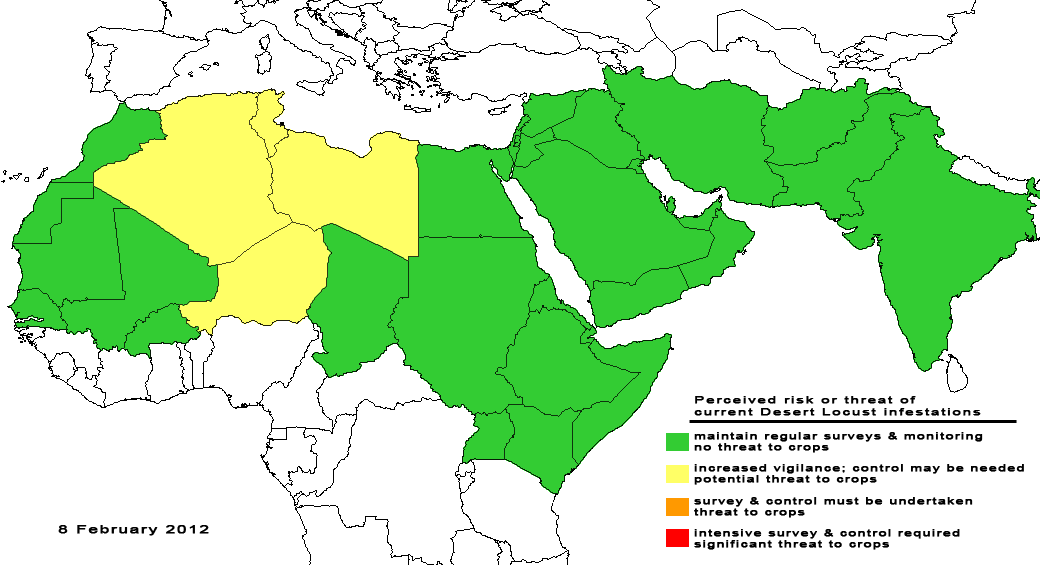The risk has shifted in response to locusts moving from the summer to the winter breeding areas where laying and hatching have occurred recently.
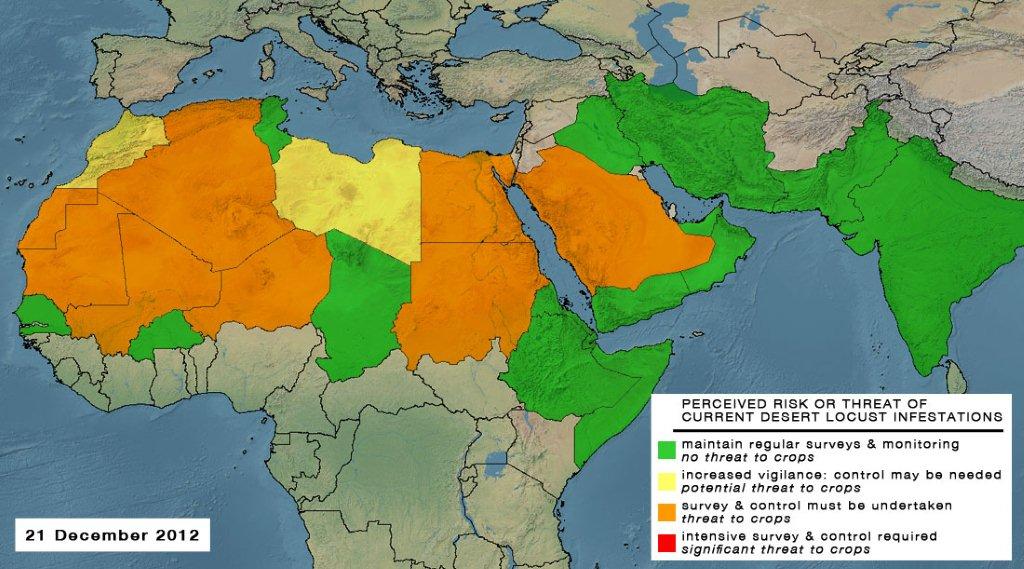
22 November. Desert Locust threat extends to additional countries
As Desert Locusts shift from the summer to the winter breeding areas, the potential threat and risk extends to additional countries where control may be needed in order to protect crops.
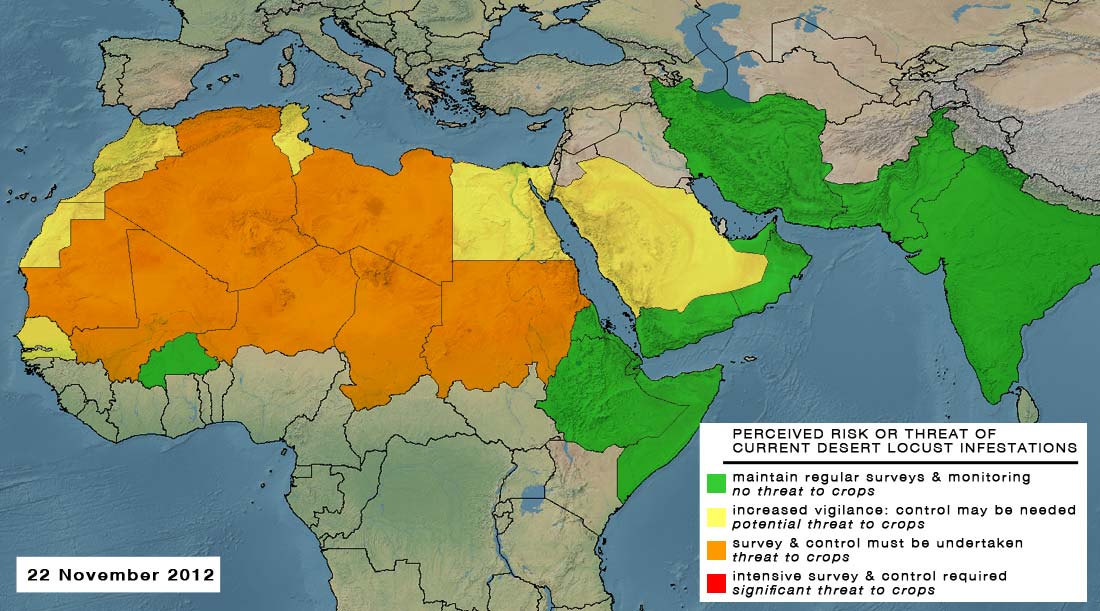
2 October. Desert Locust threat expands in the Sahel
A second generation of breeding in underway in Mali, Niger and Chad. Once hoppers fledge, adults are expected to form swarms that will move to other countries in the Region from mid-October onwards.
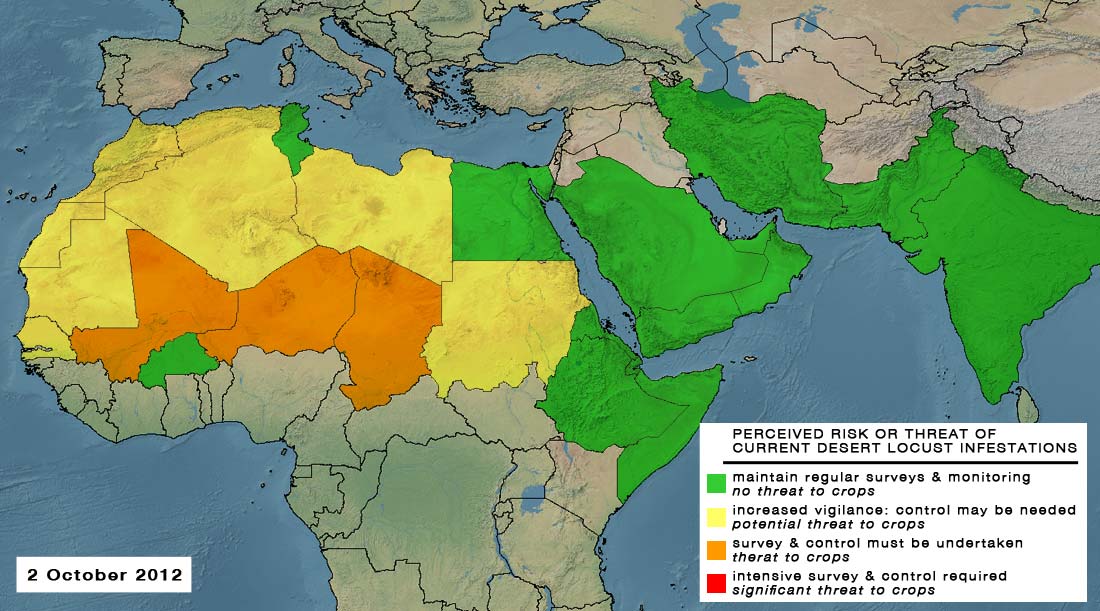
3 July. Desert Locust threat in Niger and Mali
Survey and control operations must be undertaken wherever possible as adults are ready to lay eggs; pastures and crops are threatened.
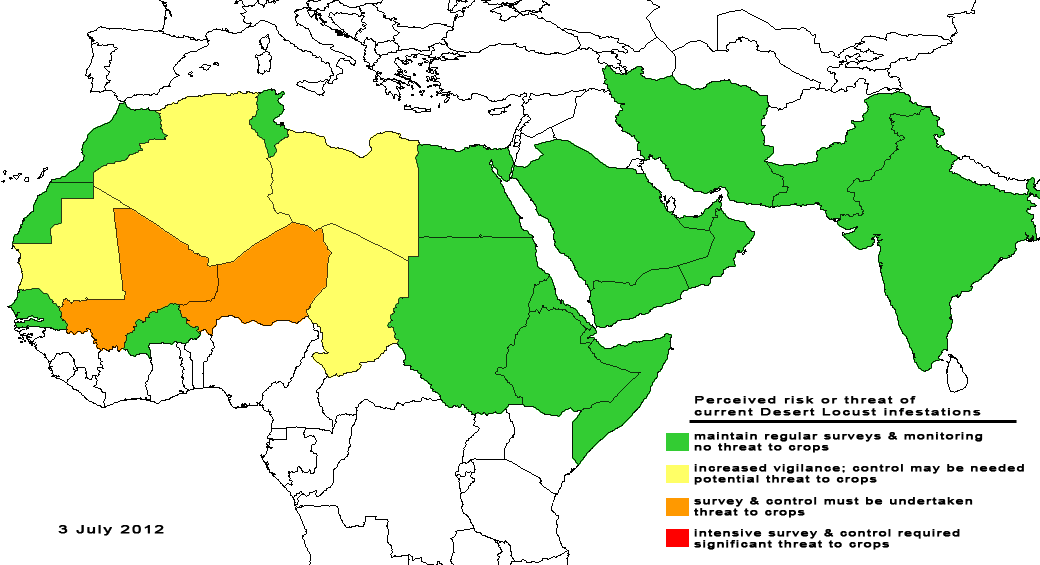
26 June. Sahel countries to be on alert
Locusts in Niger and Mali may spread into parts of Mauritania and Chad.
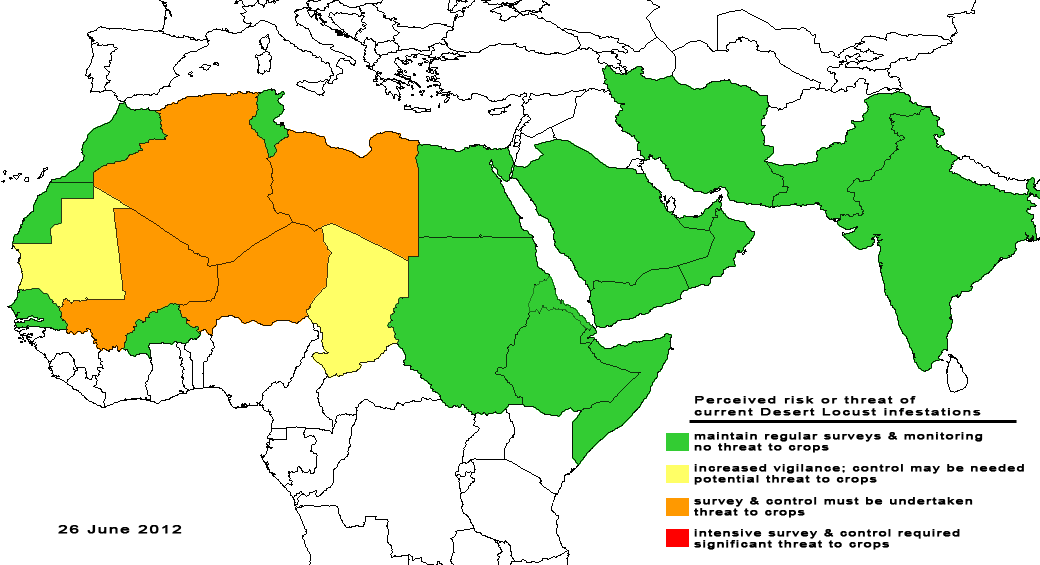
8 June. Locusts arriving in Niger and Mali elevates threat level
Caution
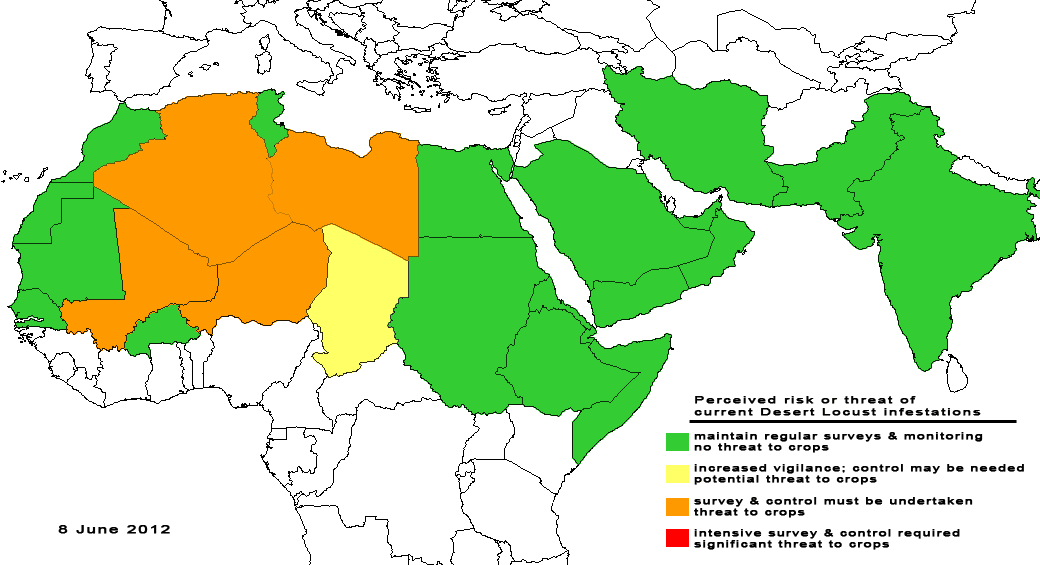
28 May. Locust swarms forming in Libya and Algeria threaten Niger and Mali
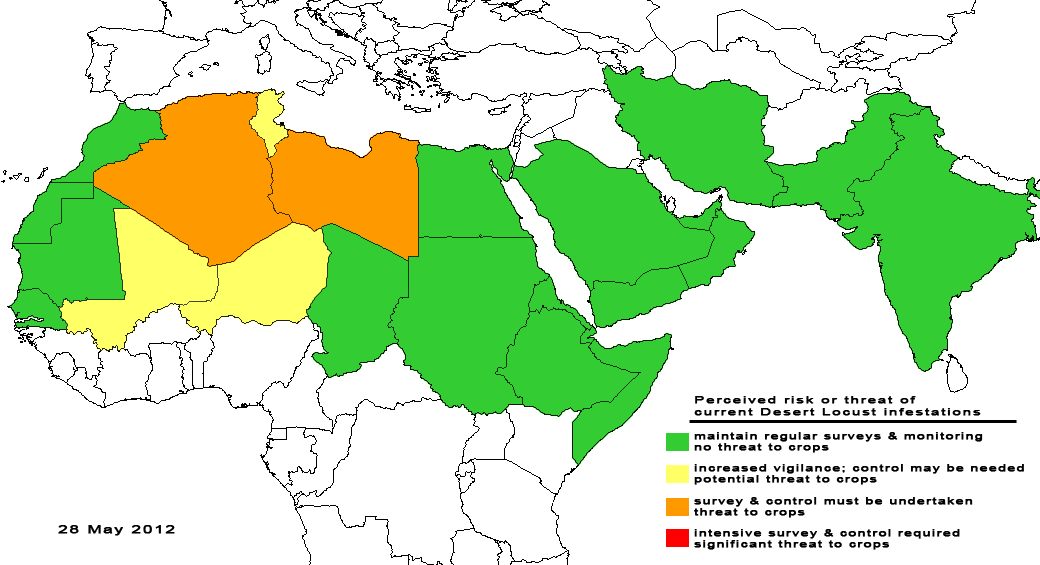
8 February. Locust outbreak in Libya elevates threat level
As there is a chance that an outbreak in SW Libya could affect neighbouring countries, the threat level is raised to Caution for Libya, Algeria, Tunisia and Niger.
